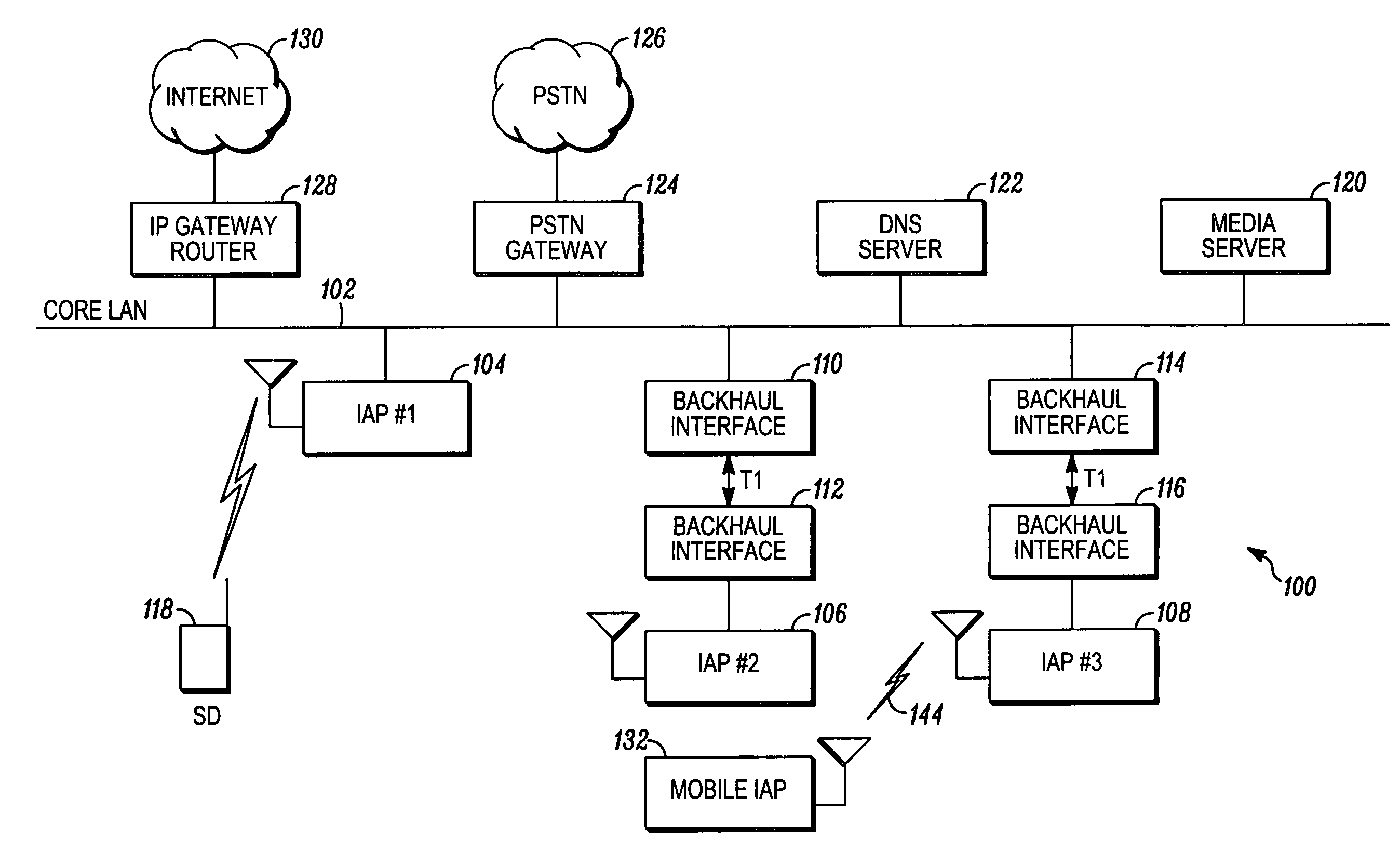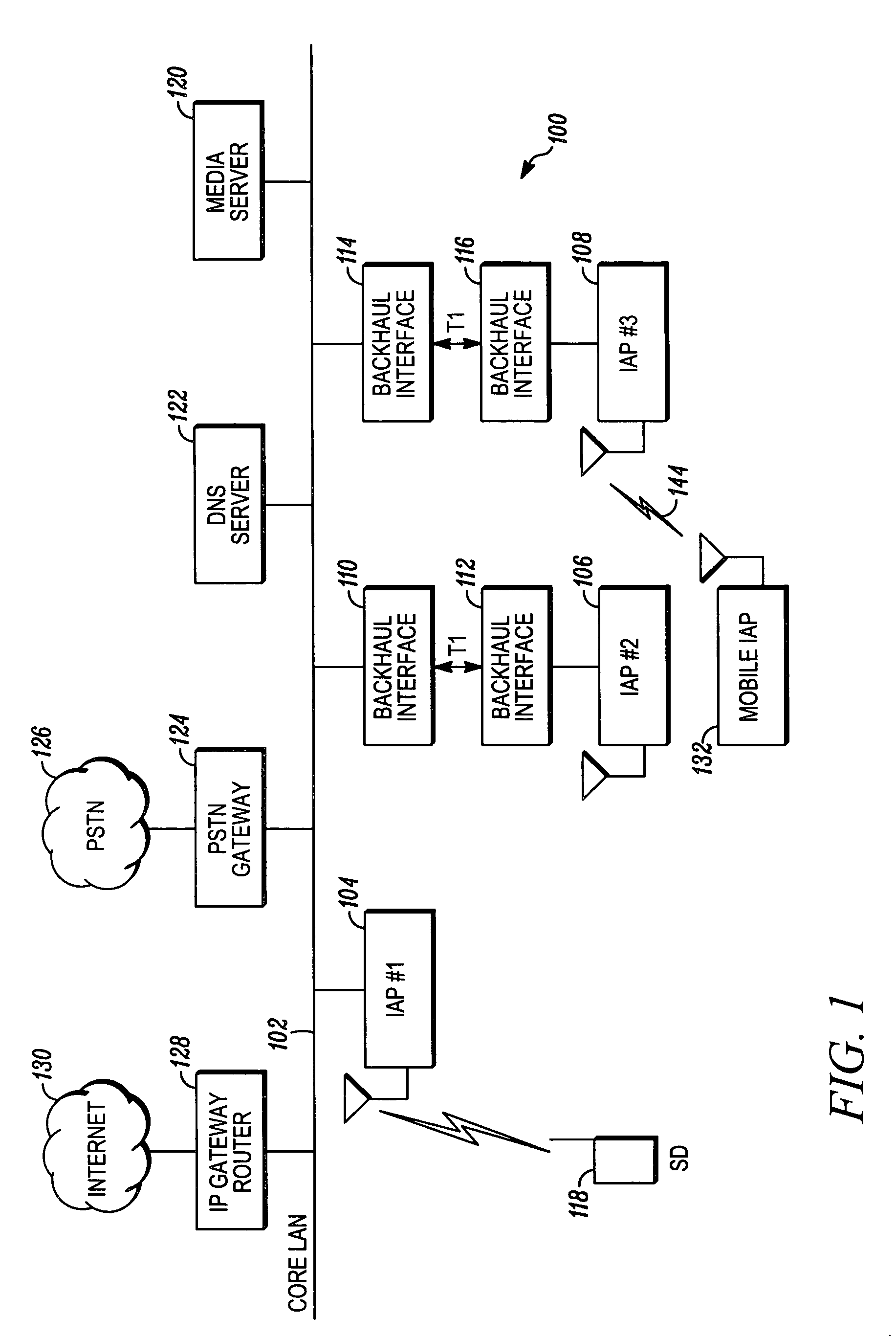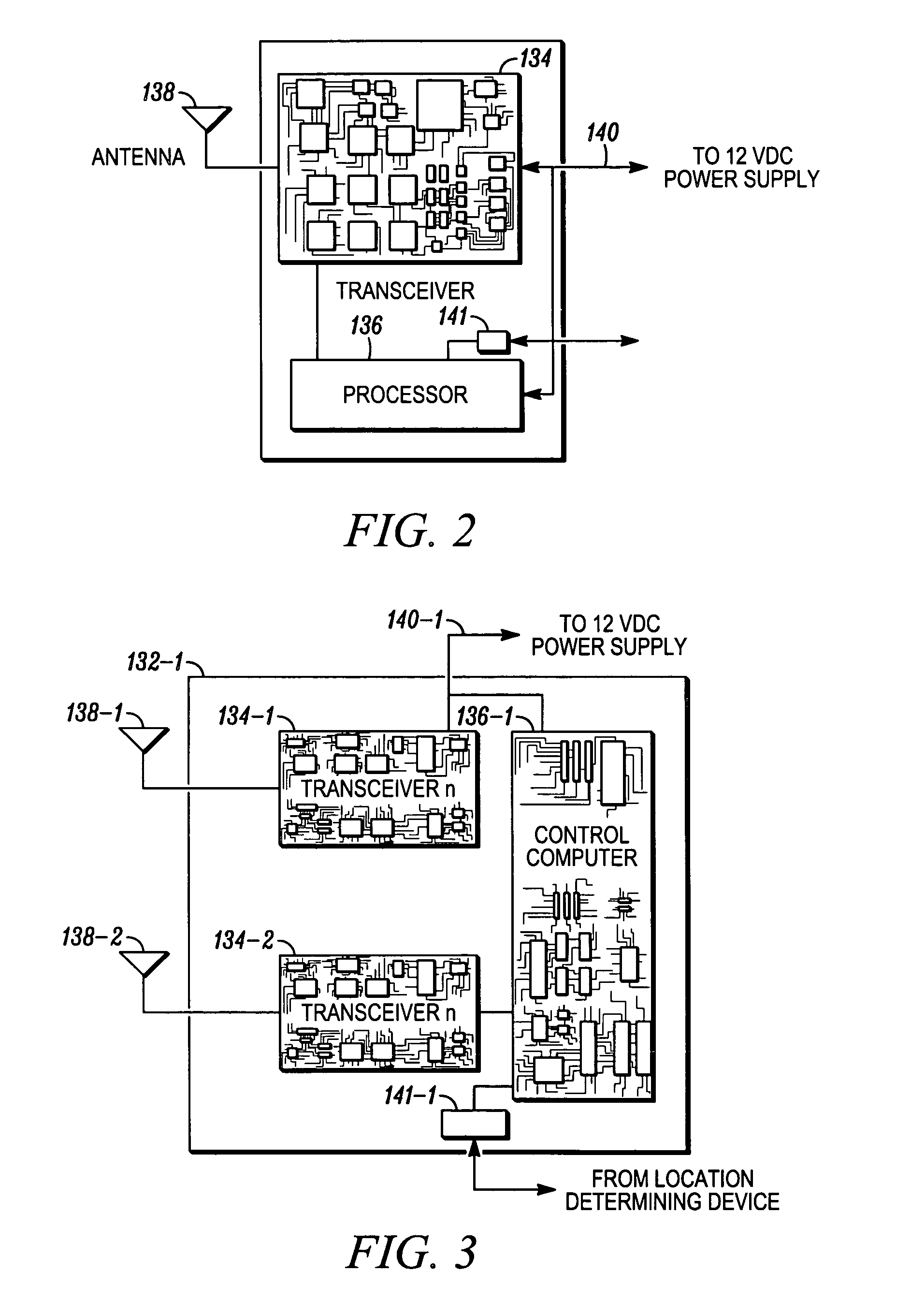Movable access points and repeaters for minimizing coverage and capacity constraints in a wireless communications network and a method for using the same
wireless communication technology, applied in the field of mobile access points and repeaters in a wireless communications network for minimizing coverage and capacity constraints in the network, can solve the problems of exacerbated coverage and capacity constraints, inability to deploy numerous base stations in these commuting areas, and inability to provide an adequate number of base stations for a region, etc., to achieve the effect of improving the ability of a wireless communications network
- Summary
- Abstract
- Description
- Claims
- Application Information
AI Technical Summary
Benefits of technology
Problems solved by technology
Method used
Image
Examples
Embodiment Construction
[0030]FIG. 1 is a block diagram illustrating an example of a wireless communications network 100 employing mobile access terminals according to an embodiment of the present invention. As shown, network 100, which can be referred to as a “core network”, includes a core local access network (LAN) 102 which provides the wired infrastructure for the network 100. A plurality of intelligent access points (IAP) 104, 106 and 108 are coupled to and communicate with the core LAN 102. As illustrated in this example, IAP 104 is directly coupled to the core LAN 102, while IAP 106 is coupled to core LAN 102 via backhaul interfaces 110 and 112 and a T1 connection, and IAP 108 is coupled to core LAN 102 via backhaul interfaces 114 and 116 and a T1 connection. However, any suitable backhaul technology, such as T3, fiber and microwave, can be used to implement a number of backhaul modulation techniques in the wireless applications, including QDMA, TDMA, CDMA and FDMA, as pointed out in the Background...
PUM
 Login to View More
Login to View More Abstract
Description
Claims
Application Information
 Login to View More
Login to View More - R&D
- Intellectual Property
- Life Sciences
- Materials
- Tech Scout
- Unparalleled Data Quality
- Higher Quality Content
- 60% Fewer Hallucinations
Browse by: Latest US Patents, China's latest patents, Technical Efficacy Thesaurus, Application Domain, Technology Topic, Popular Technical Reports.
© 2025 PatSnap. All rights reserved.Legal|Privacy policy|Modern Slavery Act Transparency Statement|Sitemap|About US| Contact US: help@patsnap.com



